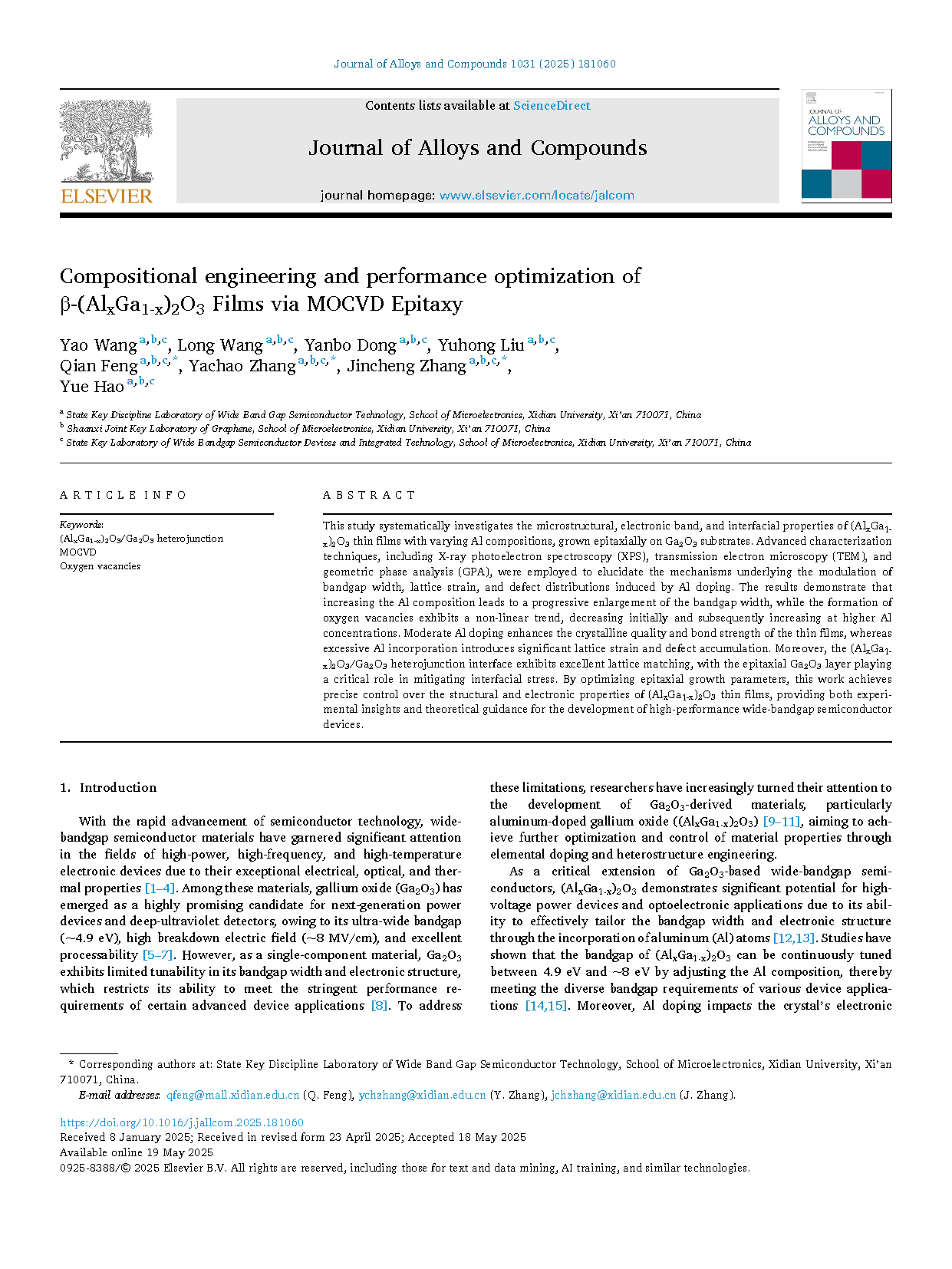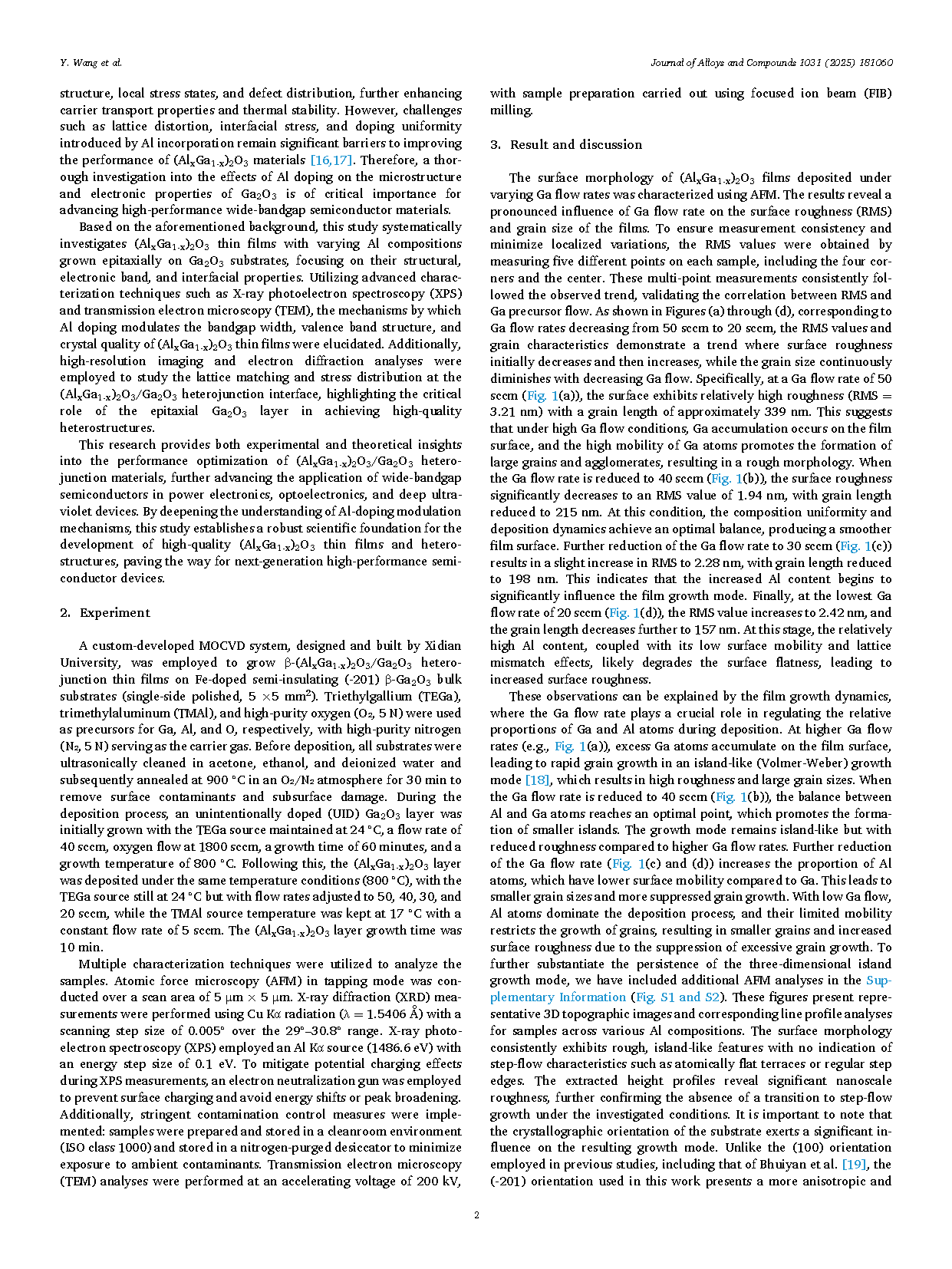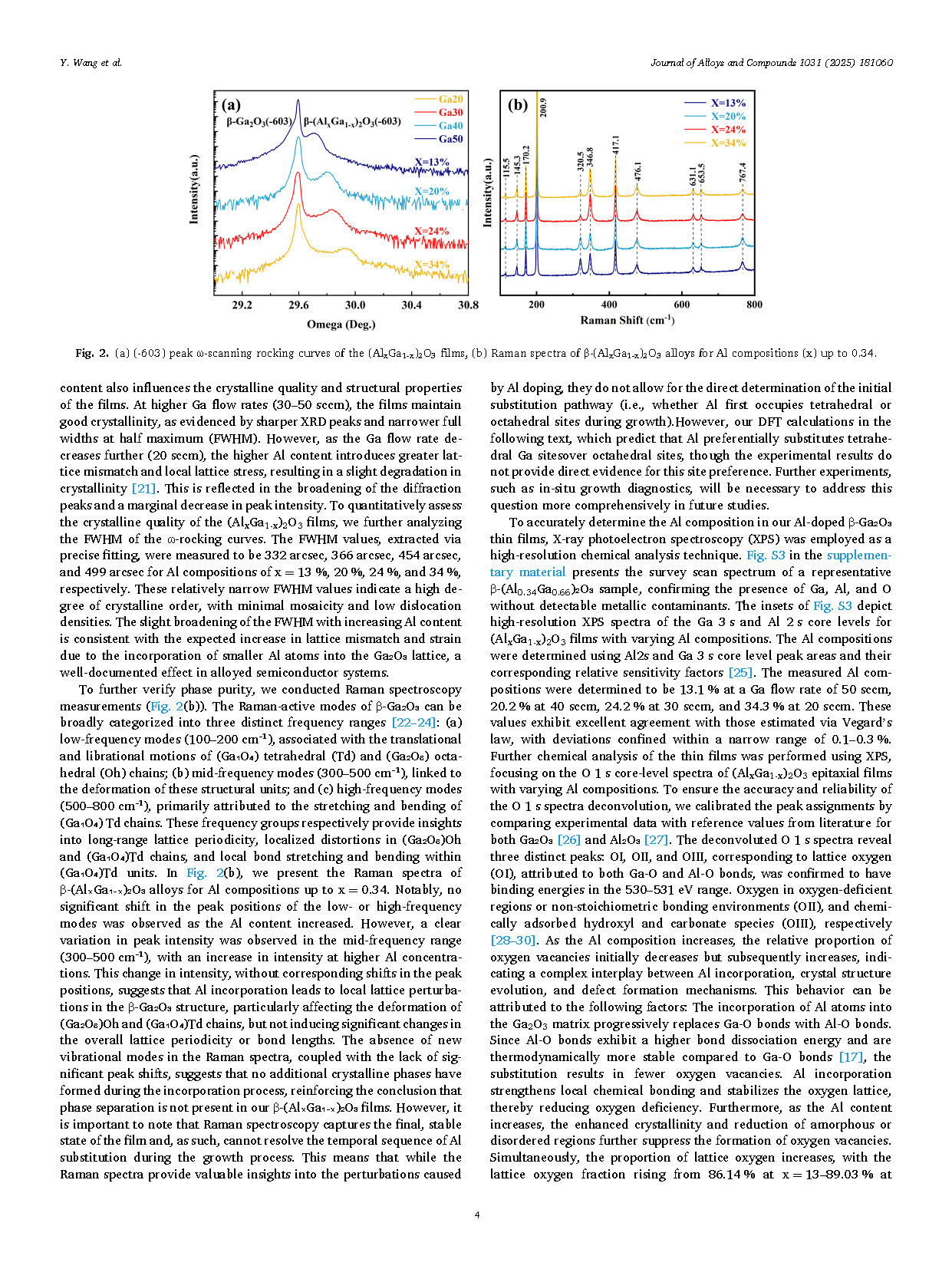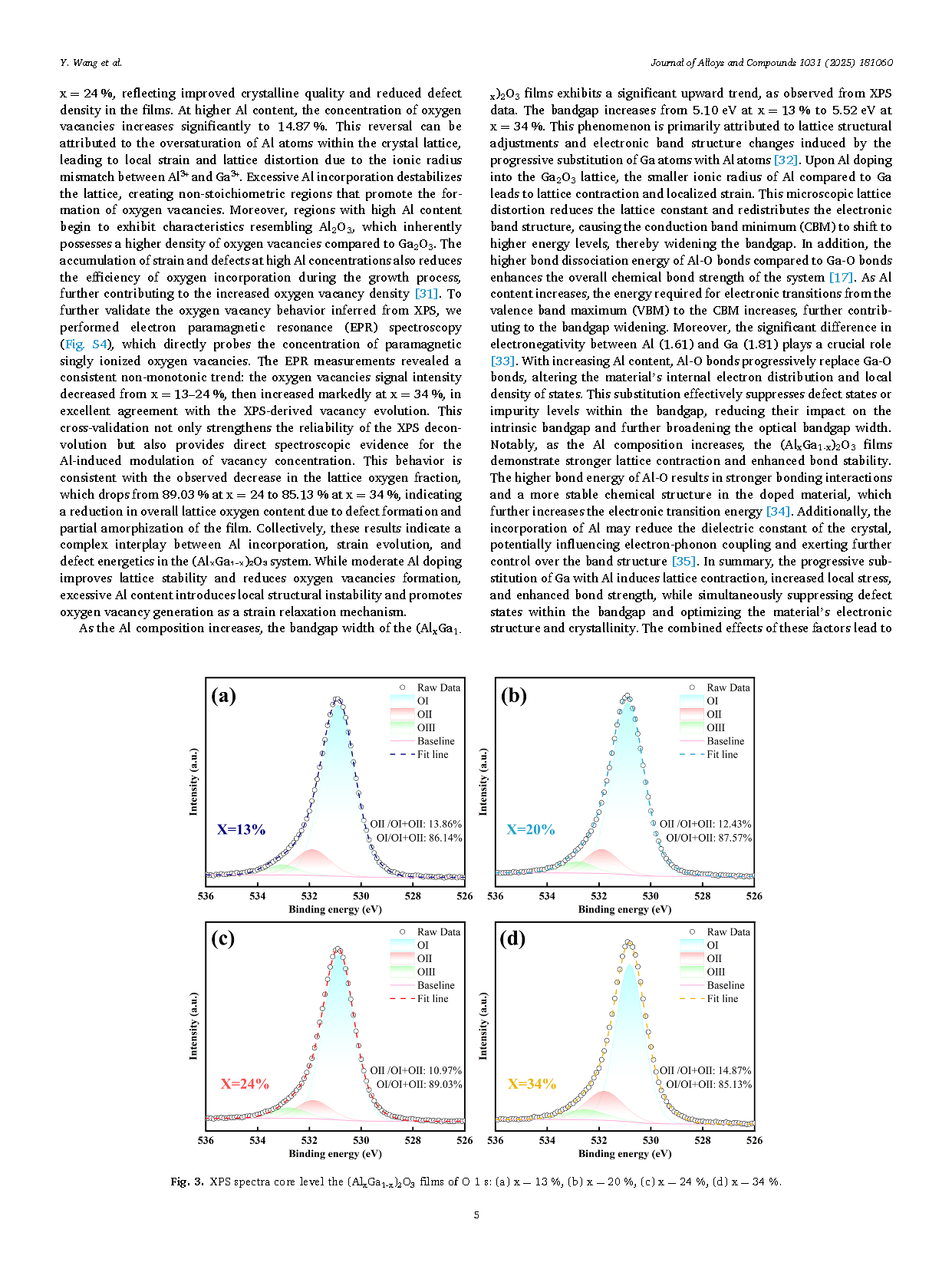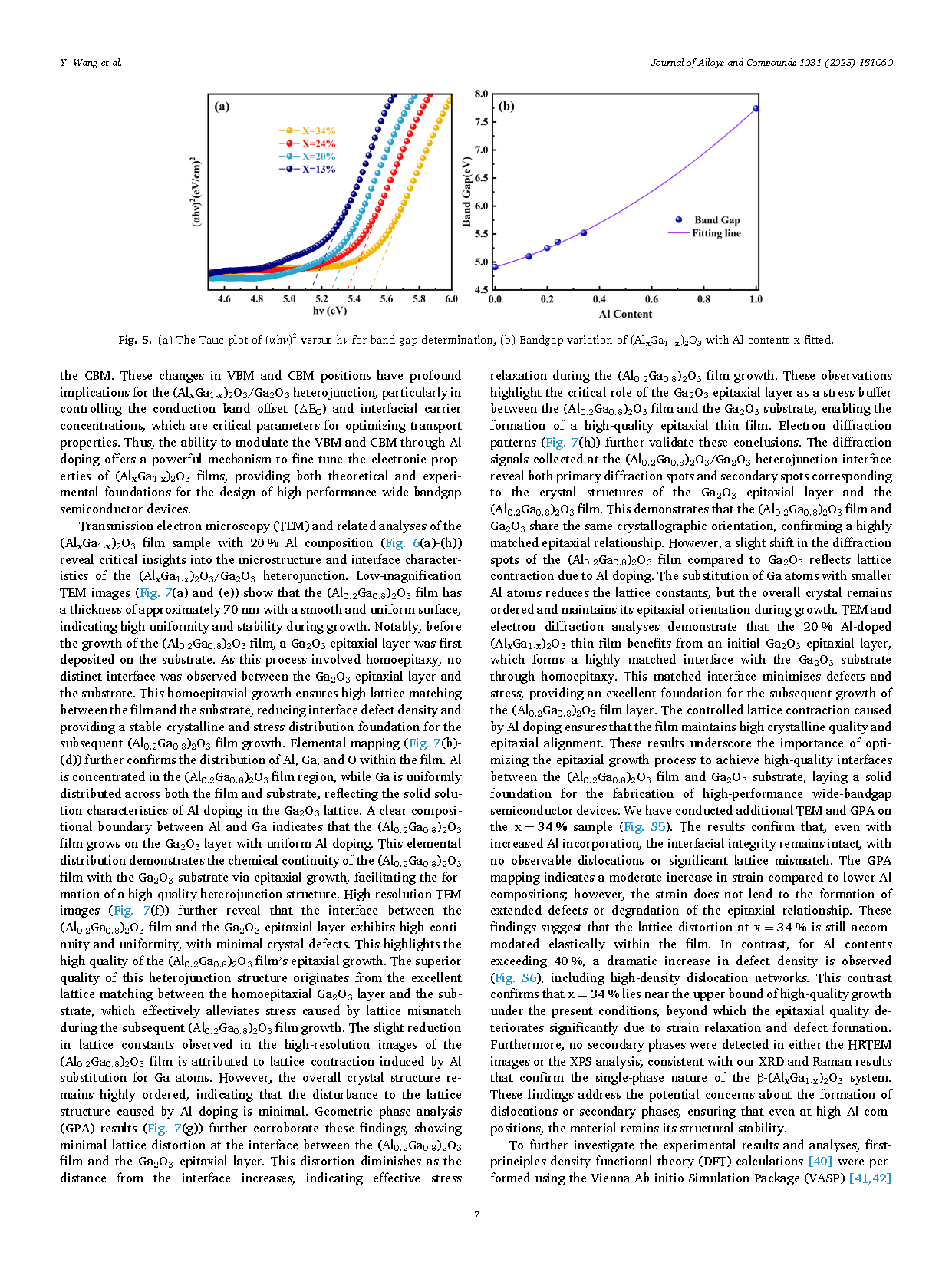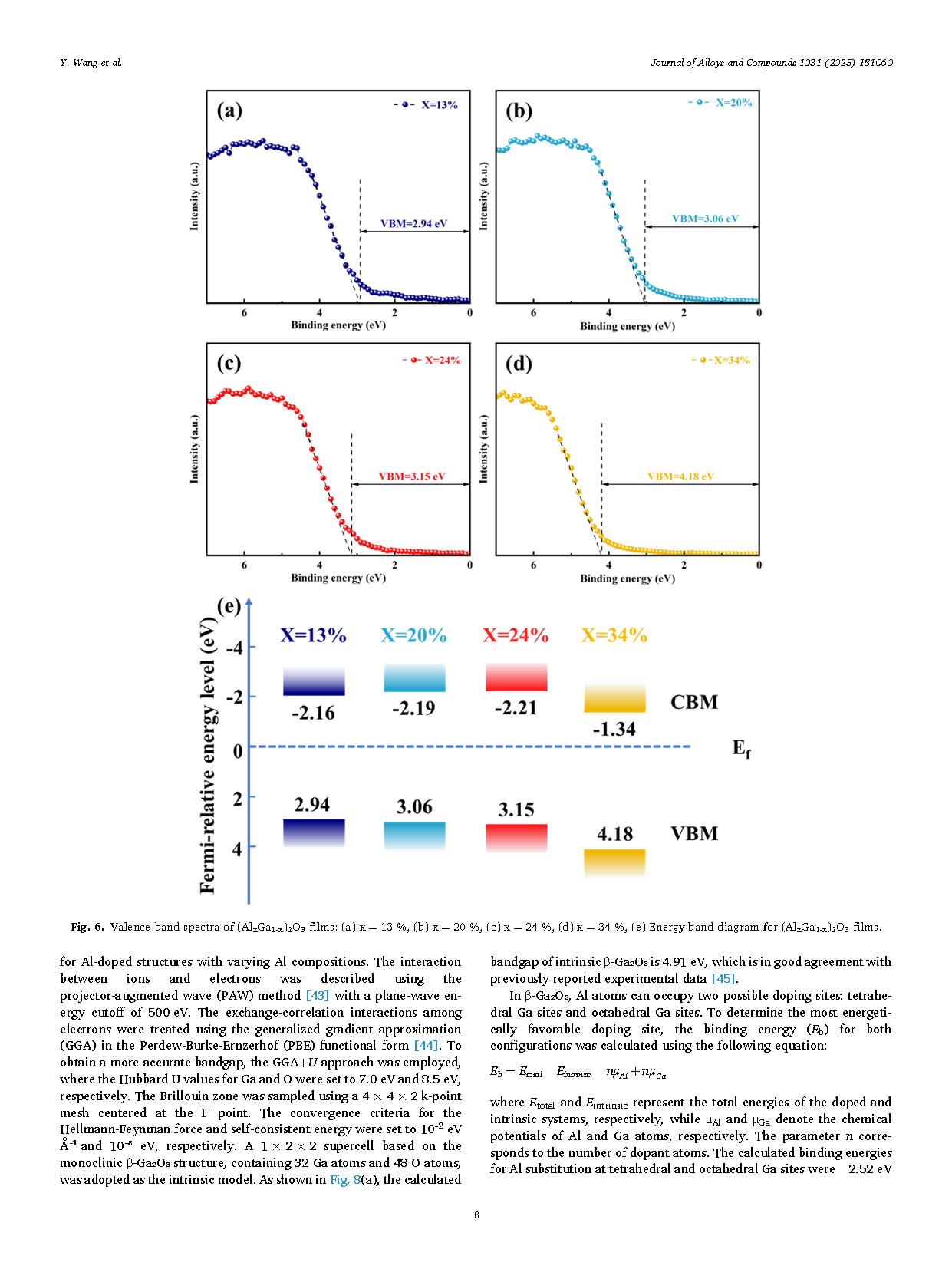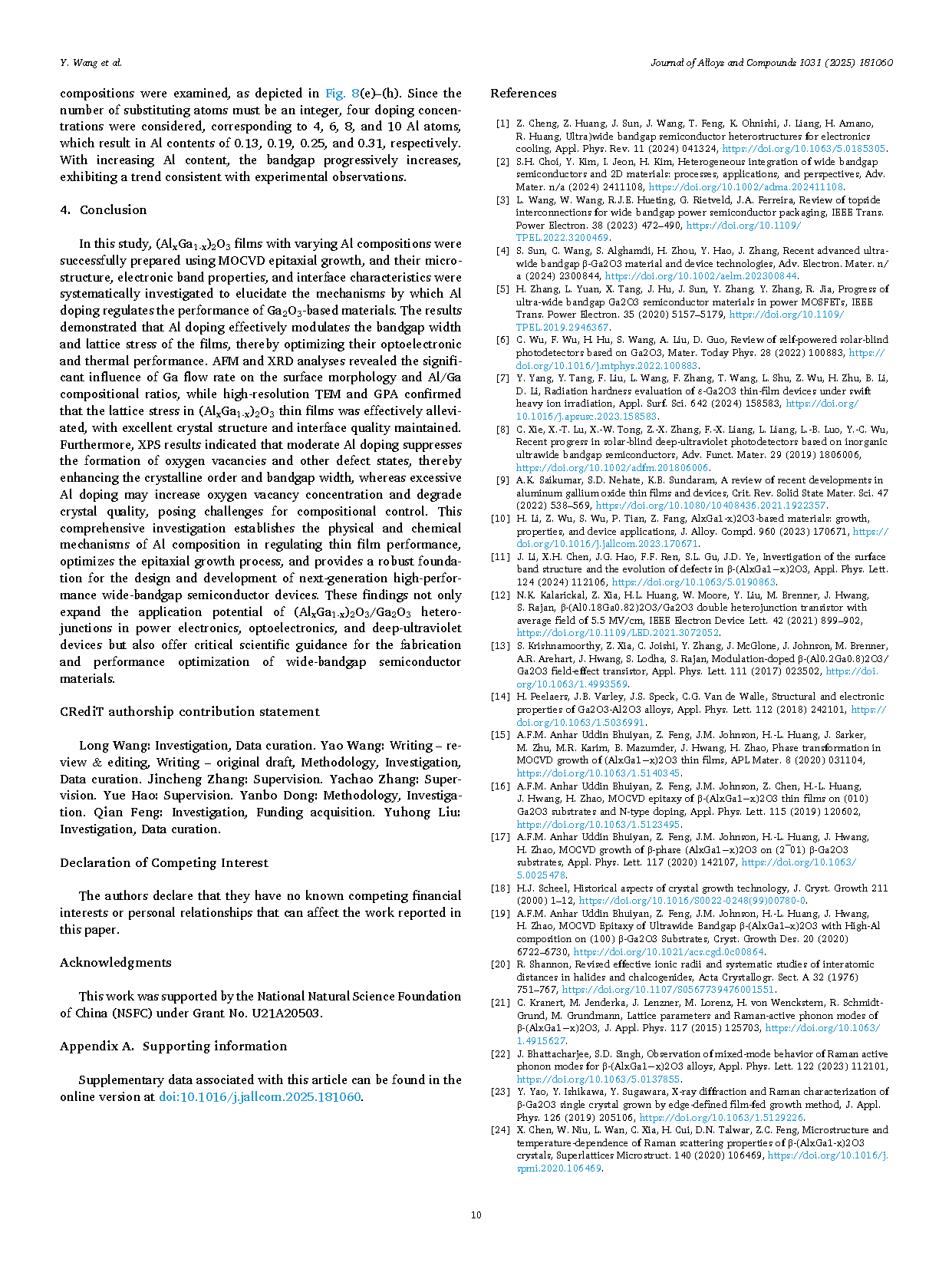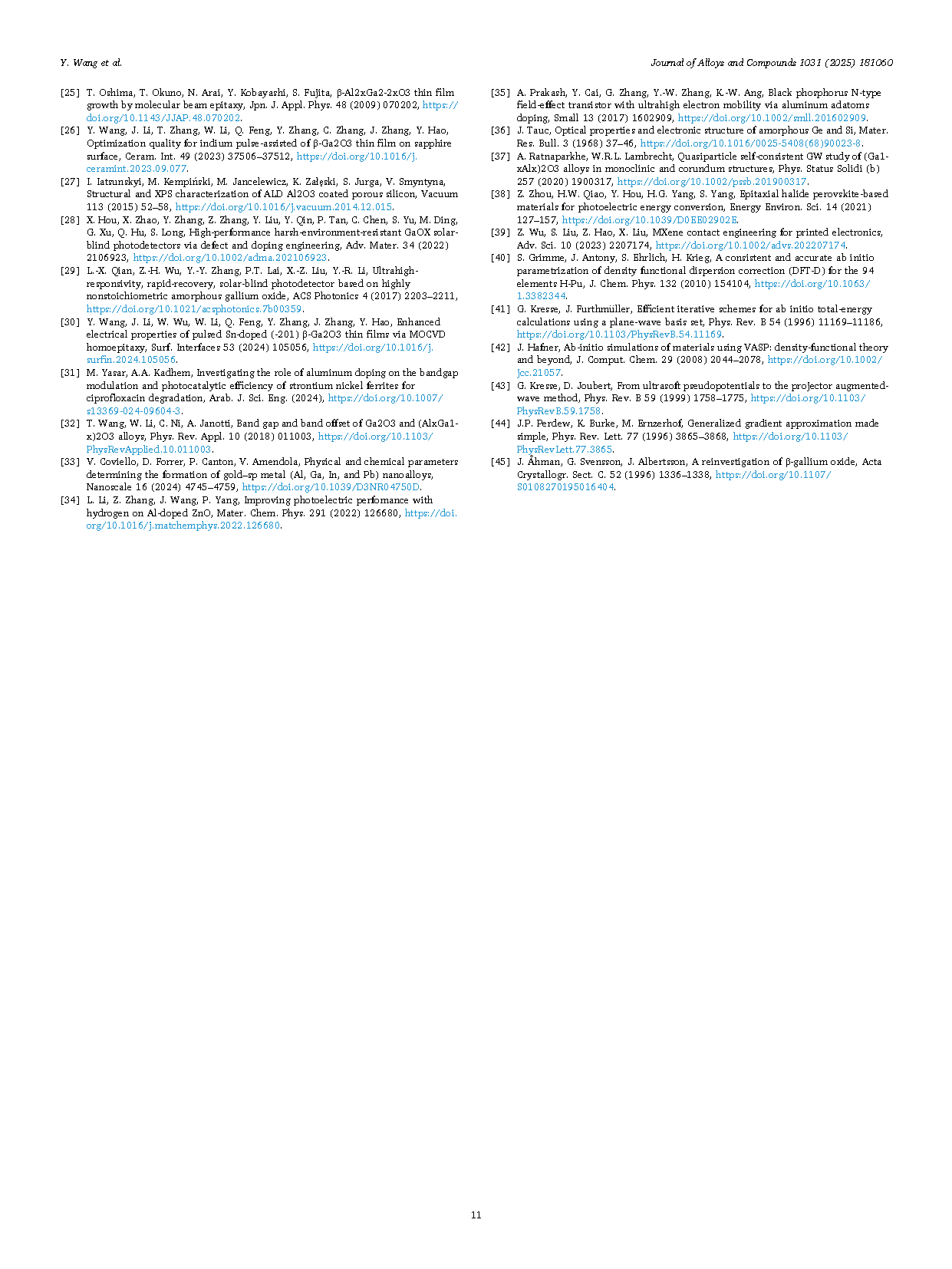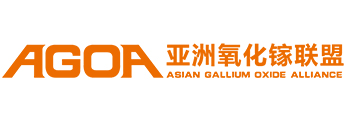

【Member Papers】Xidian University --- Compositional engineering and performance optimization of β-(AlₓGa₁₋ₓ)₂O₃ Films via MOCVD Epitaxy
日期:2025-06-05阅读:462
Researchers from the Xidian University have published a dissertation titled "Compositional engineering and performance optimization of β-(AlxGa1-x)2O3 Films via MOCVD Epitaxy" in Journal of Alloys and Compounds.
Project Support
This work was supported by the National Natural Science Foundation of China (NSFC) under Grant No. U21A20503.
Background
With the rapid advancement of semiconductor technology, wide-bandgap semiconductor materials have garnered significant attention in the fields of high-power, high-frequency, and high-temperature electronic devices due to their exceptional electrical, optical, and thermal properties. Among these materials, gallium oxide (Ga2O3) has emerged as a highly promising candidate for next-generation power devices and deep-ultraviolet detectors, owing to its ultra-wide bandgap (∼4.9 eV), high breakdown electric field (∼8 MV/cm), and excellent processability. However, as a single-component material, Ga2O3 exhibits limited tunability in its bandgap width and electronic structure, which restricts its ability to meet the stringent performance requirements of certain advanced device applications. To address these limitations, researchers have increasingly turned their attention to the development of Ga2O3-derived materials, particularly aluminum-doped gallium oxide ((AlxGa1-x)2O3), aiming to achieve further optimization and control of material properties through elemental doping and heterostructure engineering.
Abstract
This study systematically investigates the microstructural, electronic band, and interfacial properties of (AlxGa1-x)2O3 thin films with varying Al compositions, grown epitaxially on Ga2O3 substrates. Advanced characterization techniques, including X-ray photoelectron spectroscopy (XPS), transmission electron microscopy (TEM), and geometric phase analysis (GPA), were employed to elucidate the mechanisms underlying the modulation of bandgap width, lattice strain, and defect distributions induced by Al doping. The results demonstrate that increasing the Al composition leads to a progressive enlargement of the bandgap width, while the formation of oxygen vacancies exhibits a non-linear trend, decreasing initially and subsequently increasing at higher Al concentrations. Moderate Al doping enhances the crystalline quality and bond strength of the thin films, whereas excessive Al incorporation introduces significant lattice strain and defect accumulation. Moreover, the (AlxGa1-x)2O3/Ga2O3 heterojunction interface exhibits excellent lattice matching, with the epitaxial Ga2O3 layer playing a critical role in mitigating interfacial stress. By optimizing epitaxial growth parameters, this work achieves precise control over the structural and electronic properties of (AlxGa1-x)2O3 thin films, providing both experimental insights and theoretical guidance for the development of high-performance wide-bandgap semiconductor devices.
Highlights
● Systematic investigation of (AlxGa1-x)2O3 thin films grown epitaxially on Ga2O3 substrates.
● Revealed non-linear trends in oxygen vacancy dynamics influenced by Al doping.
● Identified optimized Al doping levels that enhance crystalline quality and bond strength.
● Achieved excellent lattice matching and interfacial stress mitigation in heterojunctions.
● Provides experimental and theoretical insights for high-performance wide-bandgap semiconductors.
Conclusion
In this study, (AlxGa1-x)2O3 films with varying Al compositions were successfully prepared using MOCVD epitaxial growth, and their microstructure, electronic band properties, and interface characteristics were systematically investigated to elucidate the mechanisms by which Al doping regulates the performance of Ga2O3-based materials. The results demonstrated that Al doping effectively modulates the bandgap width and lattice stress of the films, thereby optimizing their optoelectronic and thermal performance. AFM and XRD analyses revealed the significant influence of Ga flow rate on the surface morphology and Al/Ga compositional ratios, while high-resolution TEM and GPA confirmed that the lattice stress in (AlxGa1-x)2O3 thin films was effectively alleviated, with excellent crystal structure and interface quality maintained. Furthermore, XPS results indicated that moderate Al doping suppresses the formation of oxygen vacancies and other defect states, thereby enhancing the crystalline order and bandgap width, whereas excessive Al doping may increase oxygen vacancy concentration and degrade crystal quality, posing challenges for compositional control. This comprehensive investigation establishes the physical and chemical mechanisms of Al composition in regulating thin film performance, optimizes the epitaxial growth process, and provides a robust foundation for the design and development of next-generation high-performance wide-bandgap semiconductor devices. These findings not only expand the application potential of (AlxGa1-x)2O3/Ga2O3 heterojunctions in power electronics, optoelectronics, and deep-ultraviolet devices but also offer critical scientific guidance for the fabrication and performance optimization of wide-bandgap semiconductor materials.
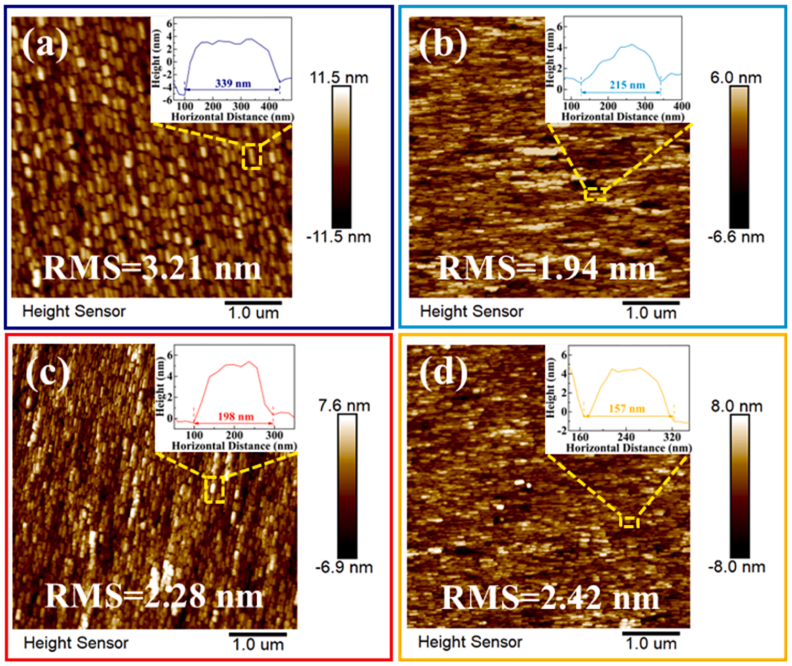
Fig. 1. AFM images of the (AlxGa1-x)2O3 films: (a) Ga:50sccm, (b) Ga:40sccm, (c) Ga:30sccm, (d) Ga:20sccm.
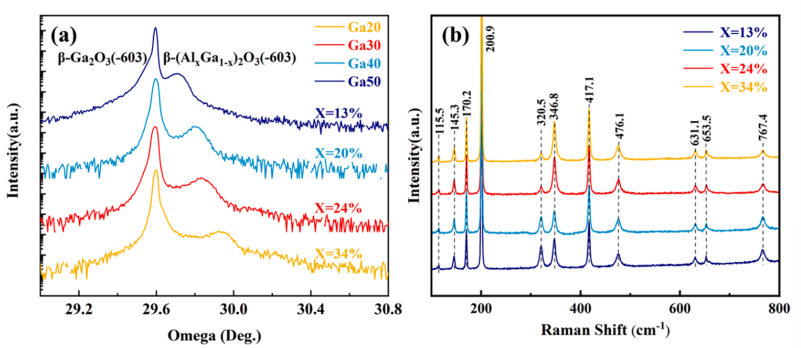
Fig. 2. (a) (-603) peak ω-scanning rocking curves of the (AlxGa1-x)2O3 films, (b) Raman spectra of β-(AlxGa1-x)2O3 alloys for Al compositions (x) up to 0.34.
DOI:
doi.org/10.1016/j.jallcom.2025.181060
